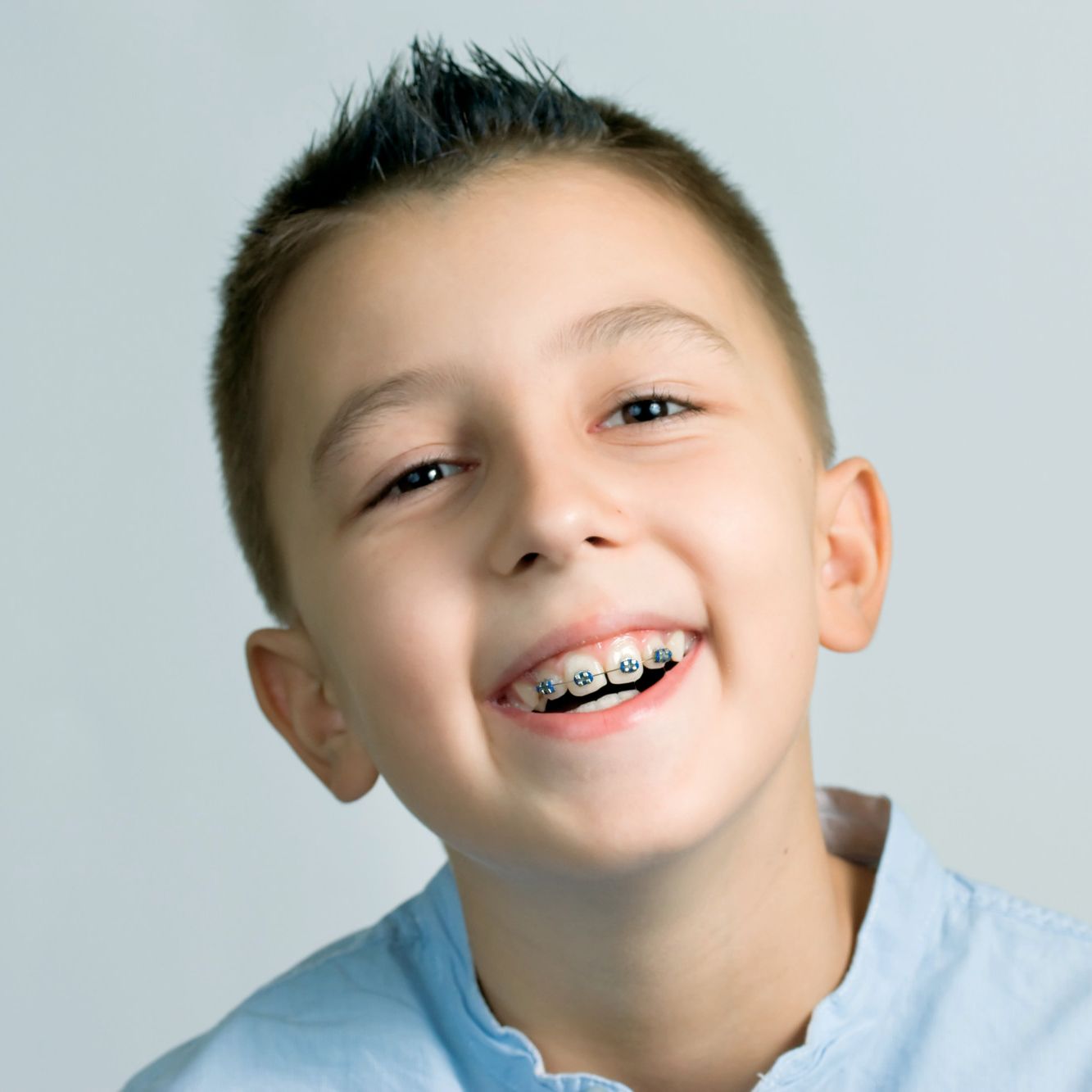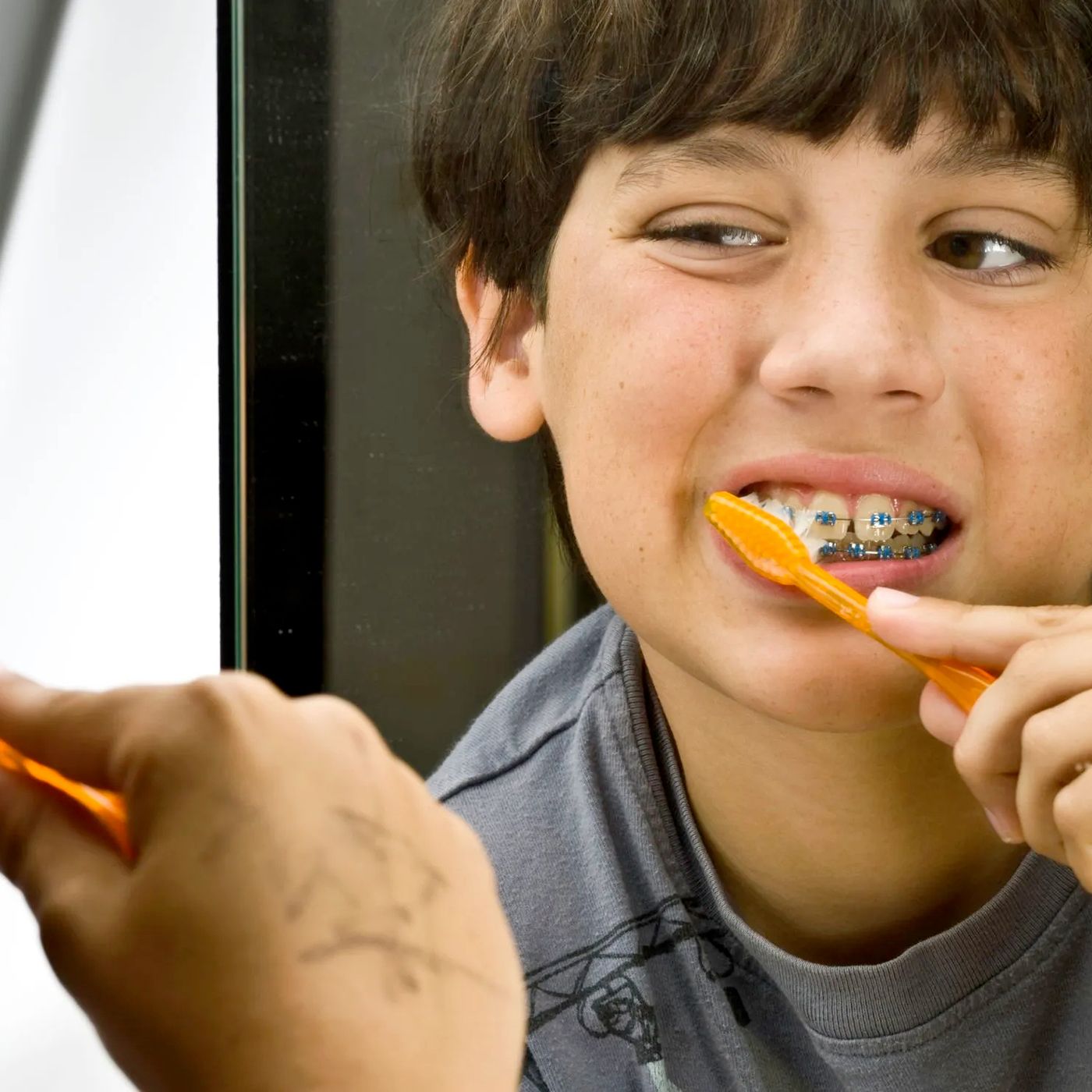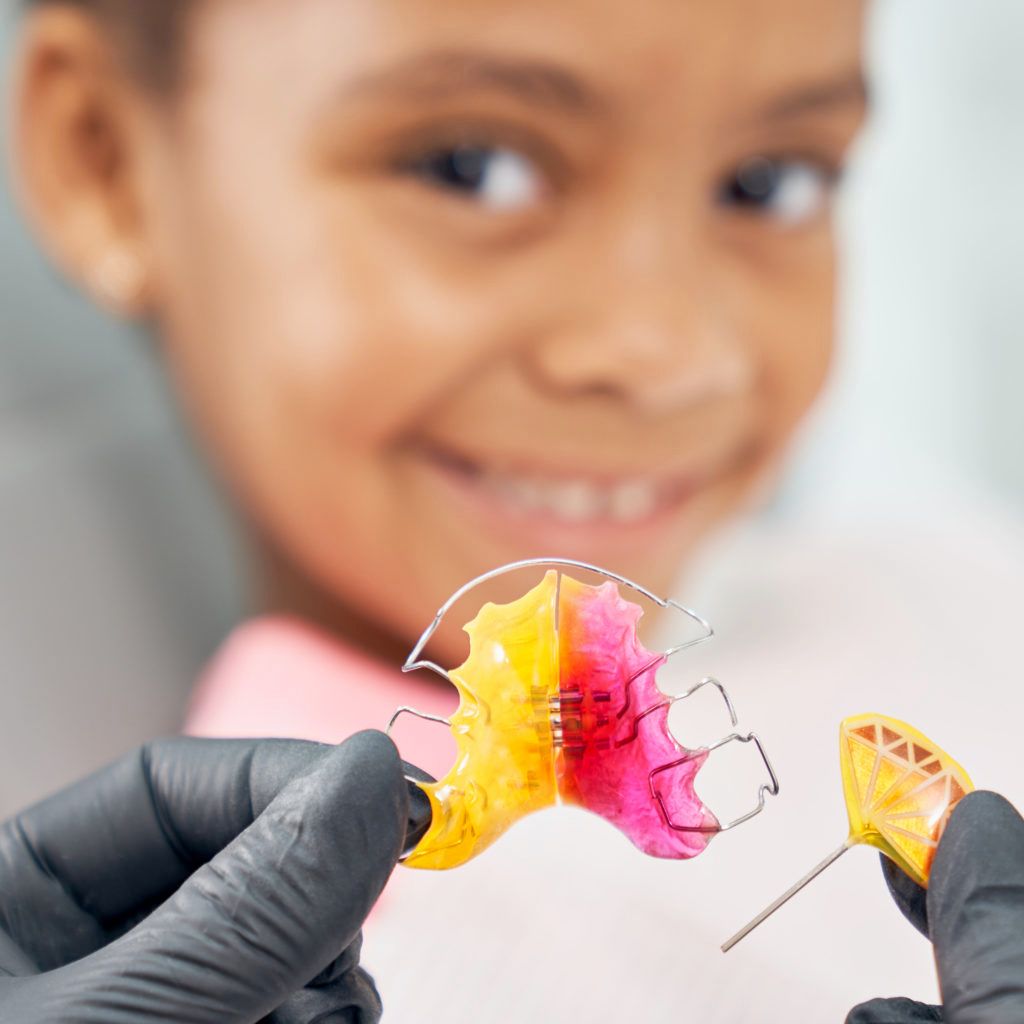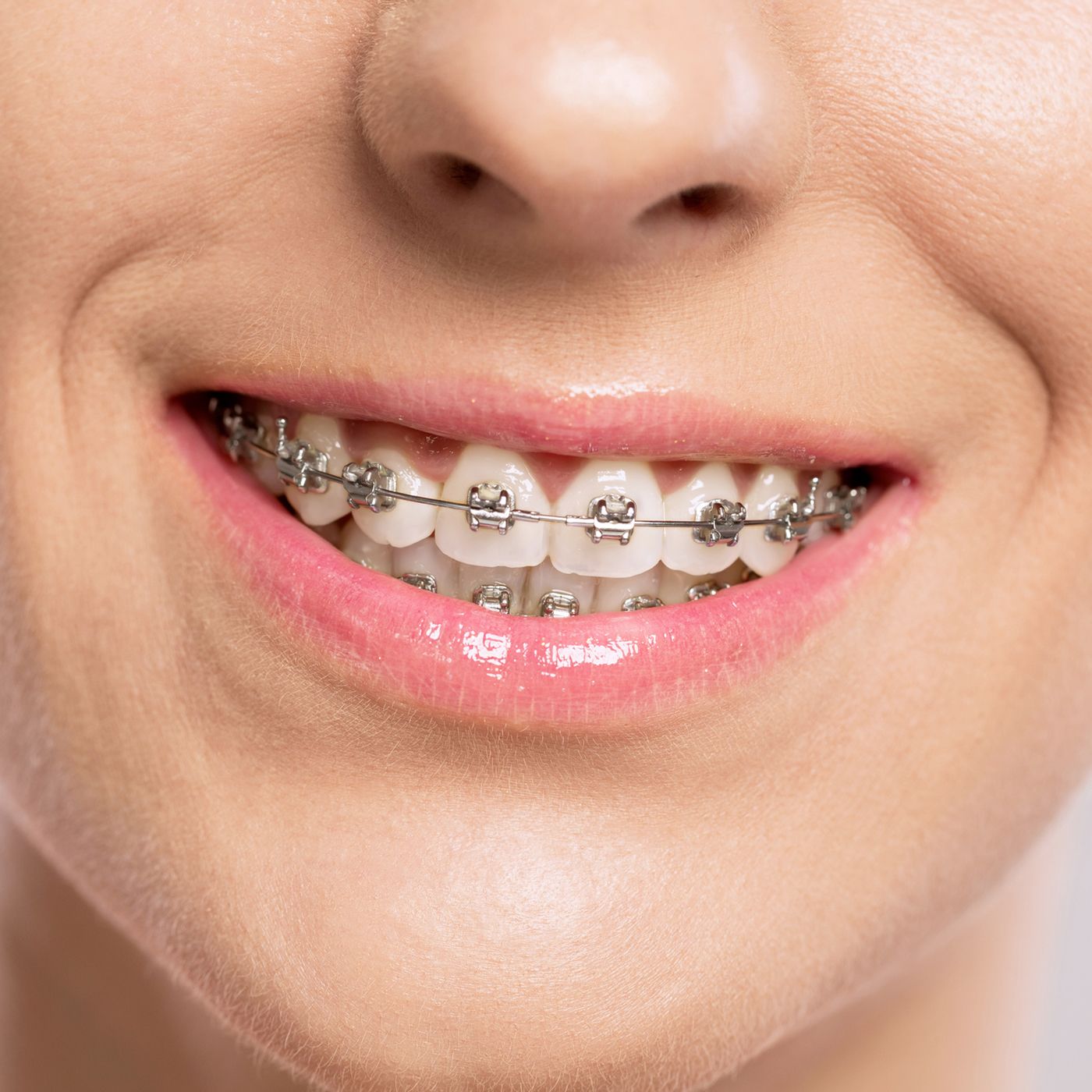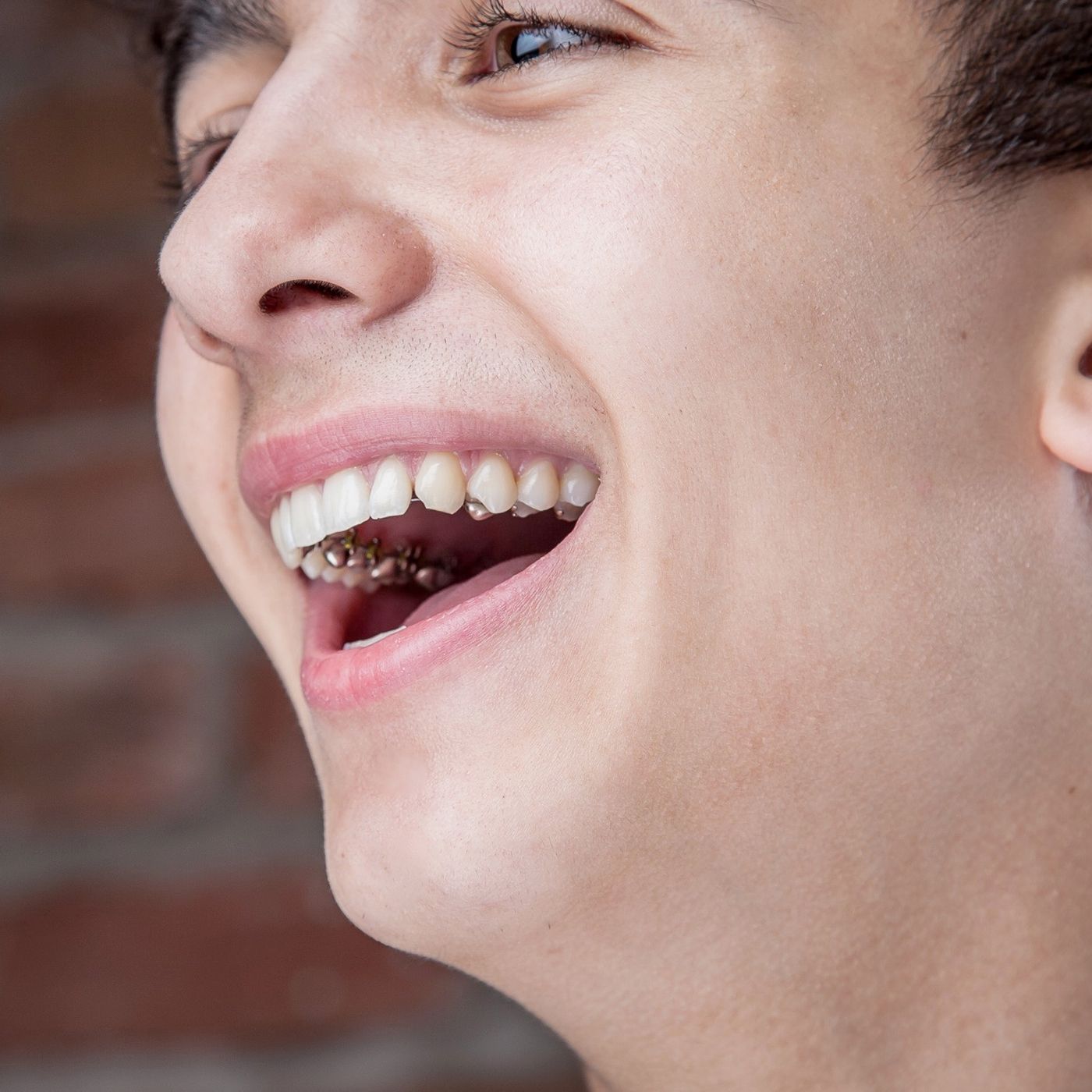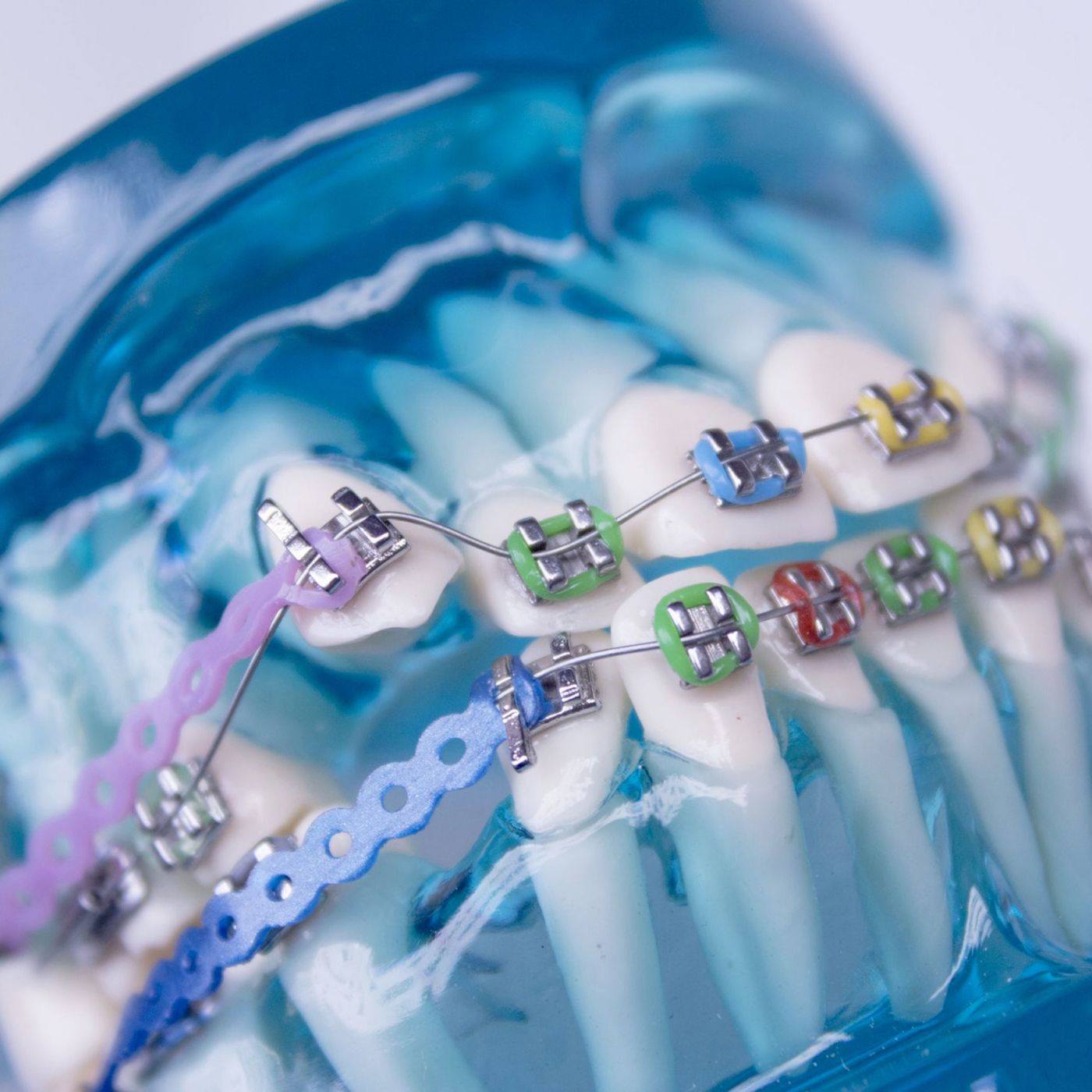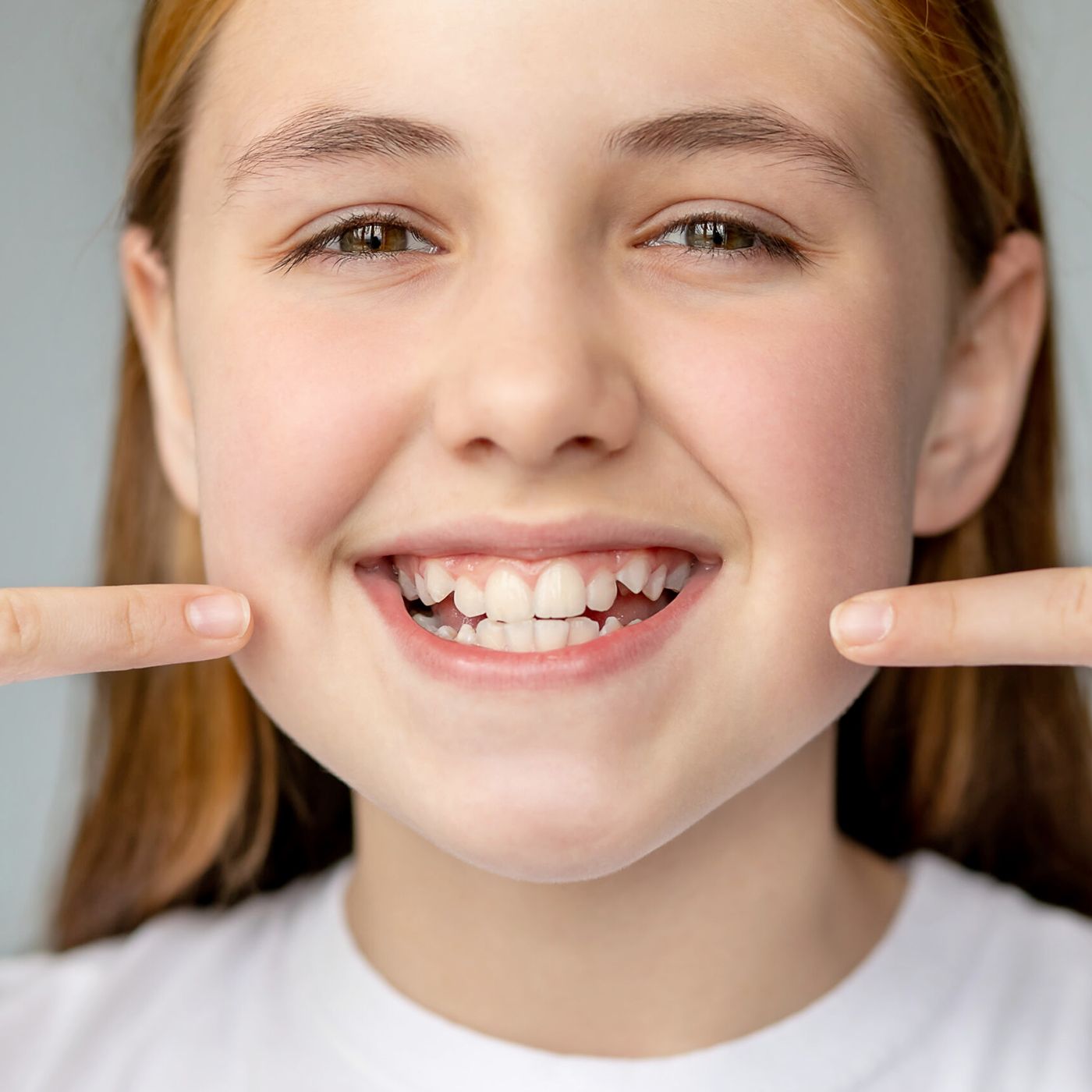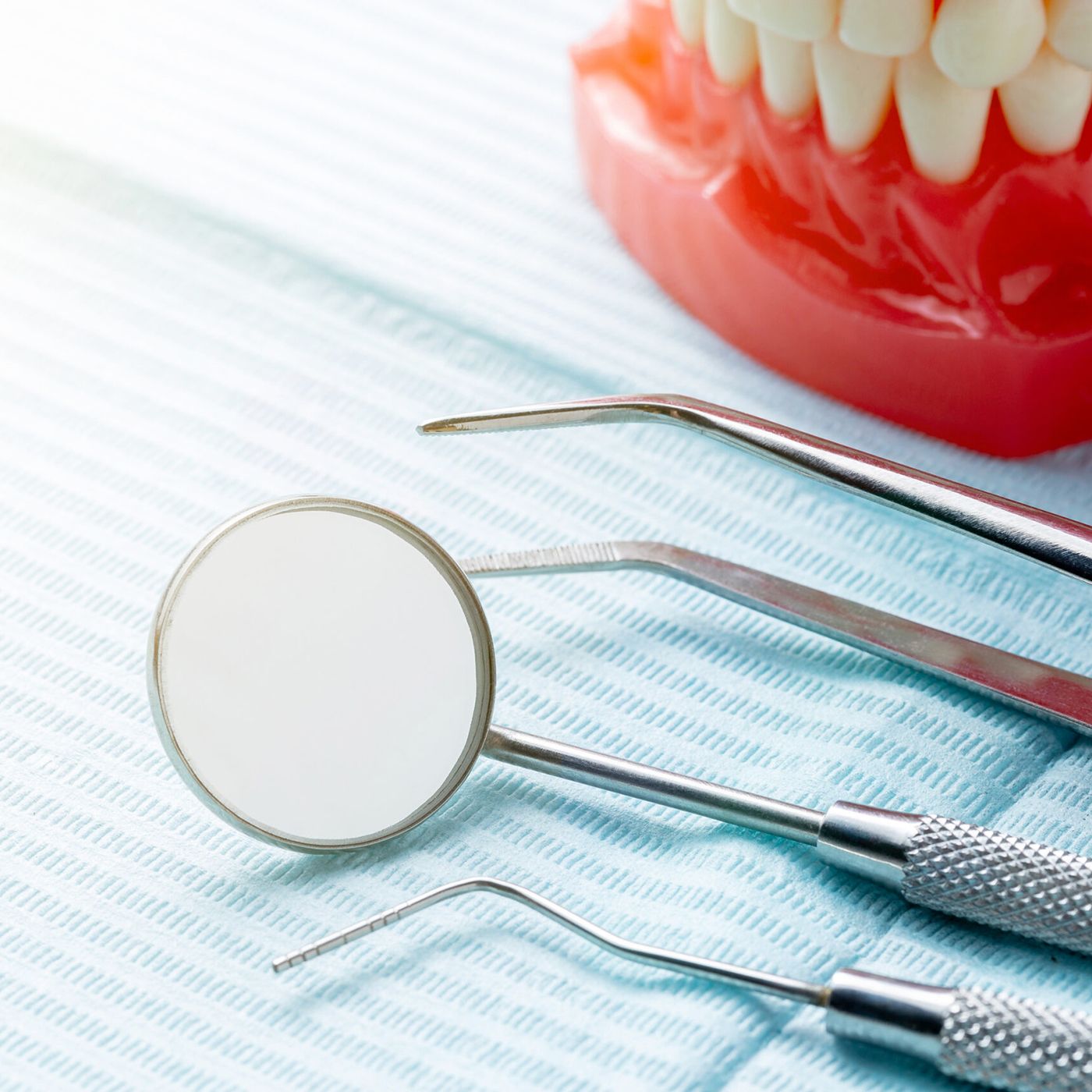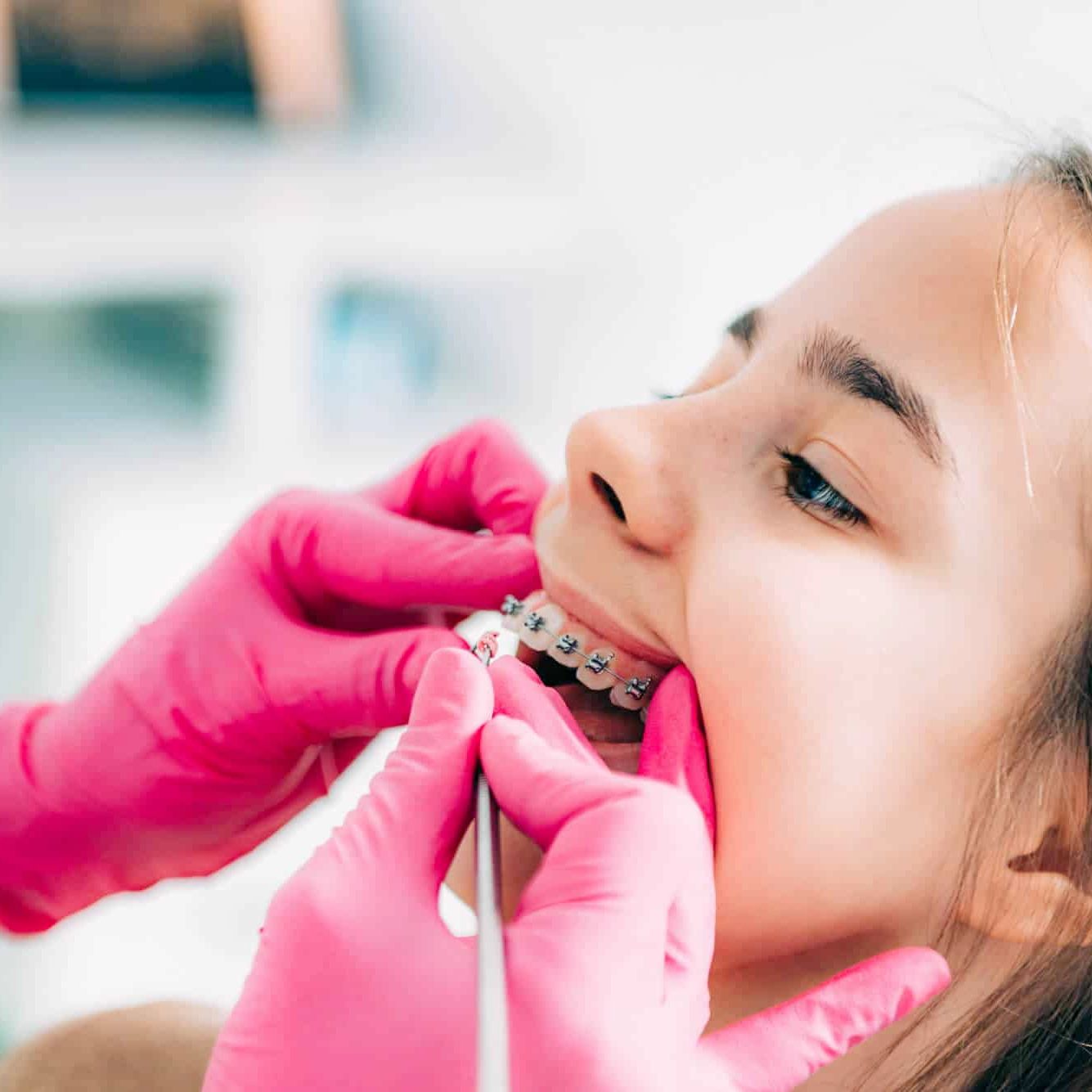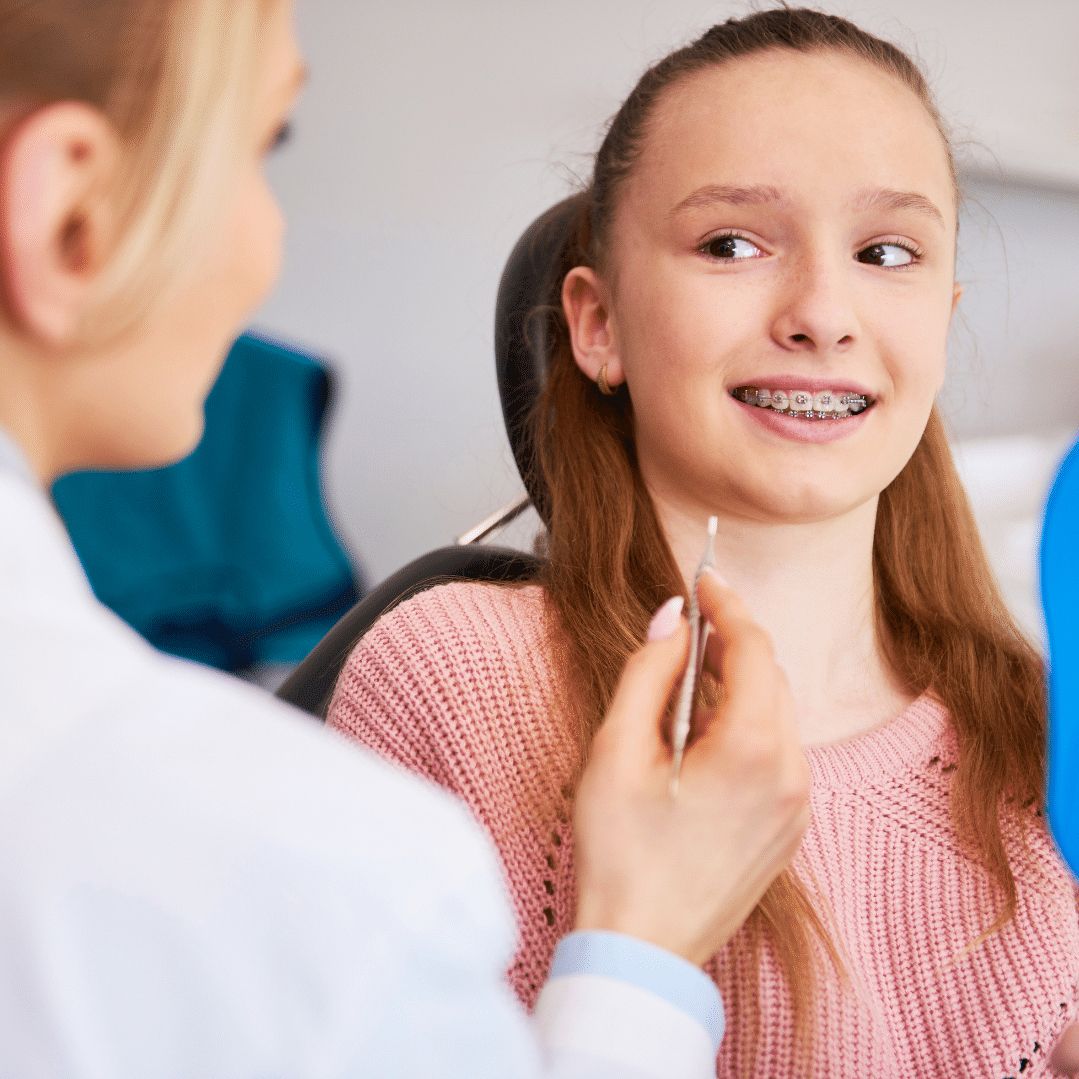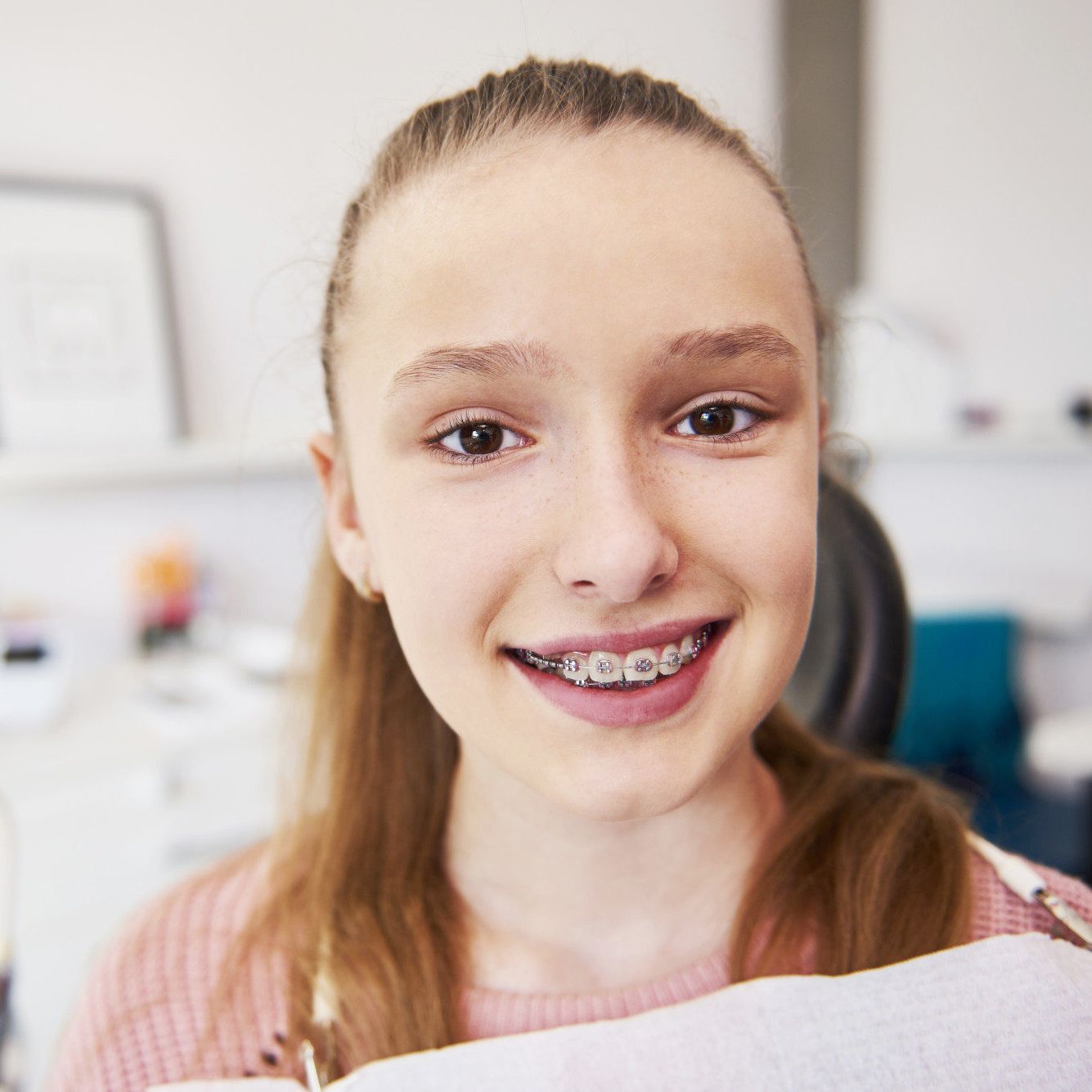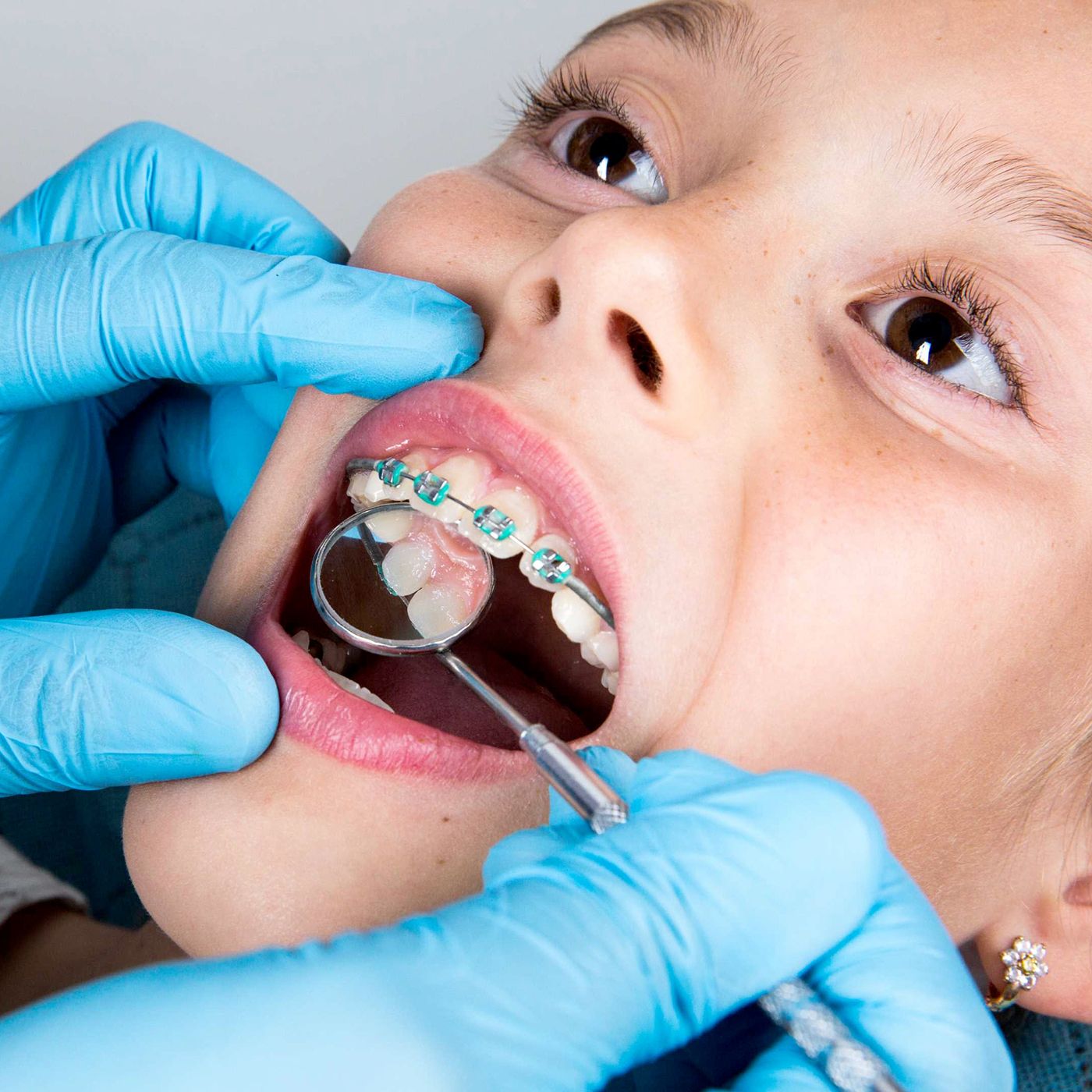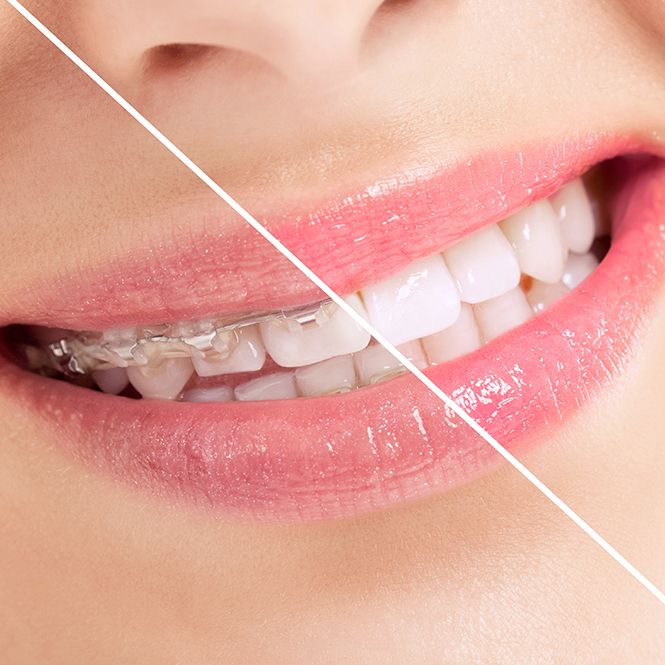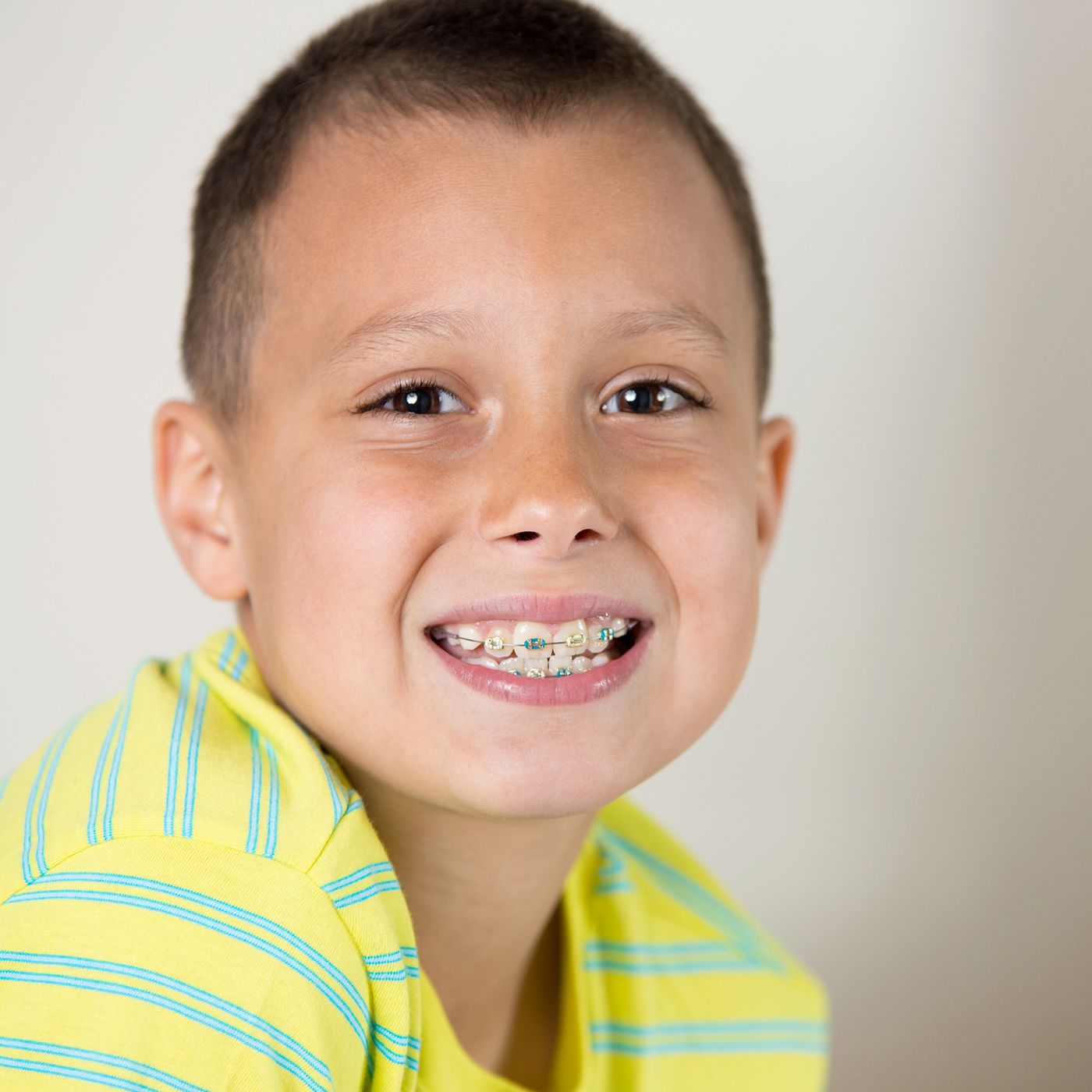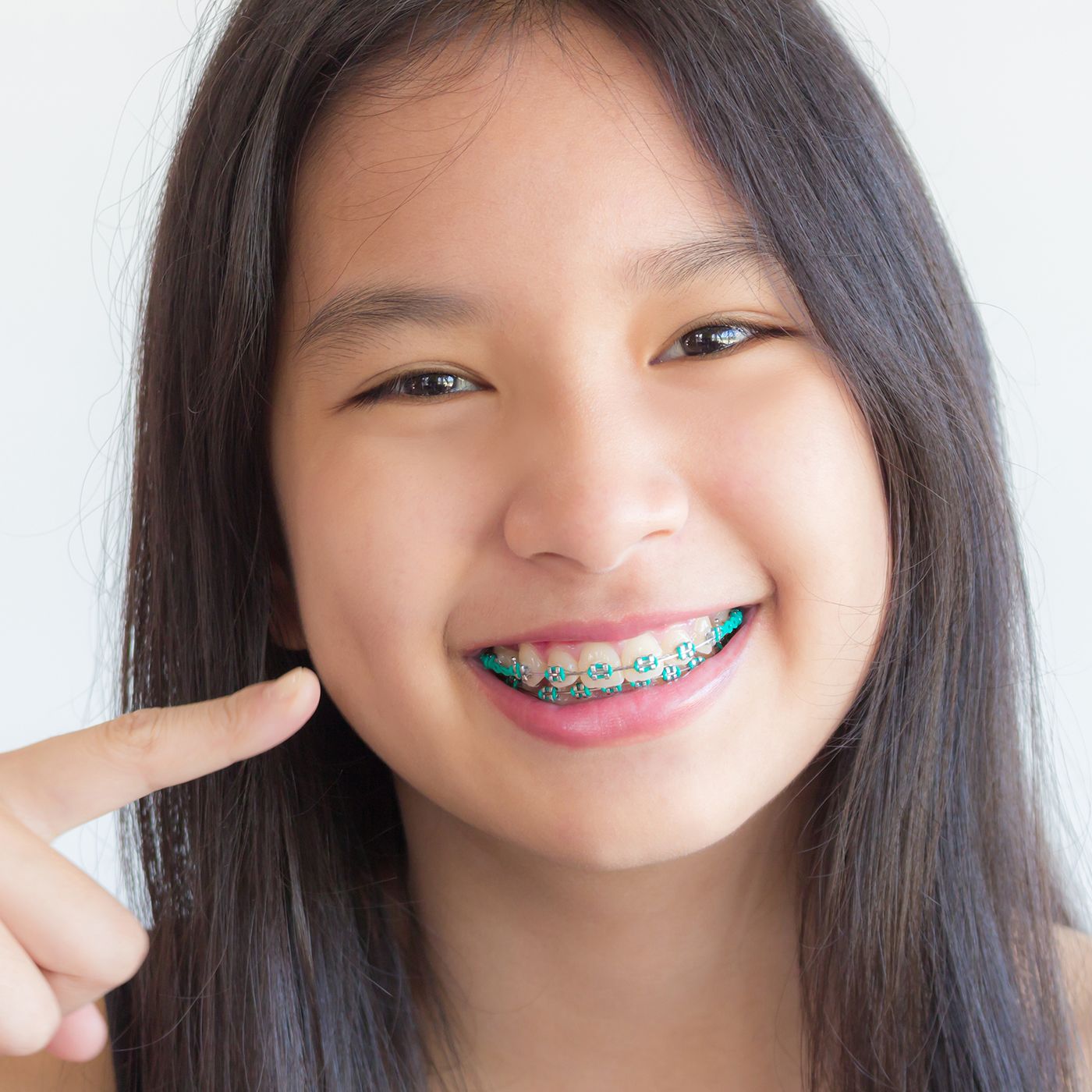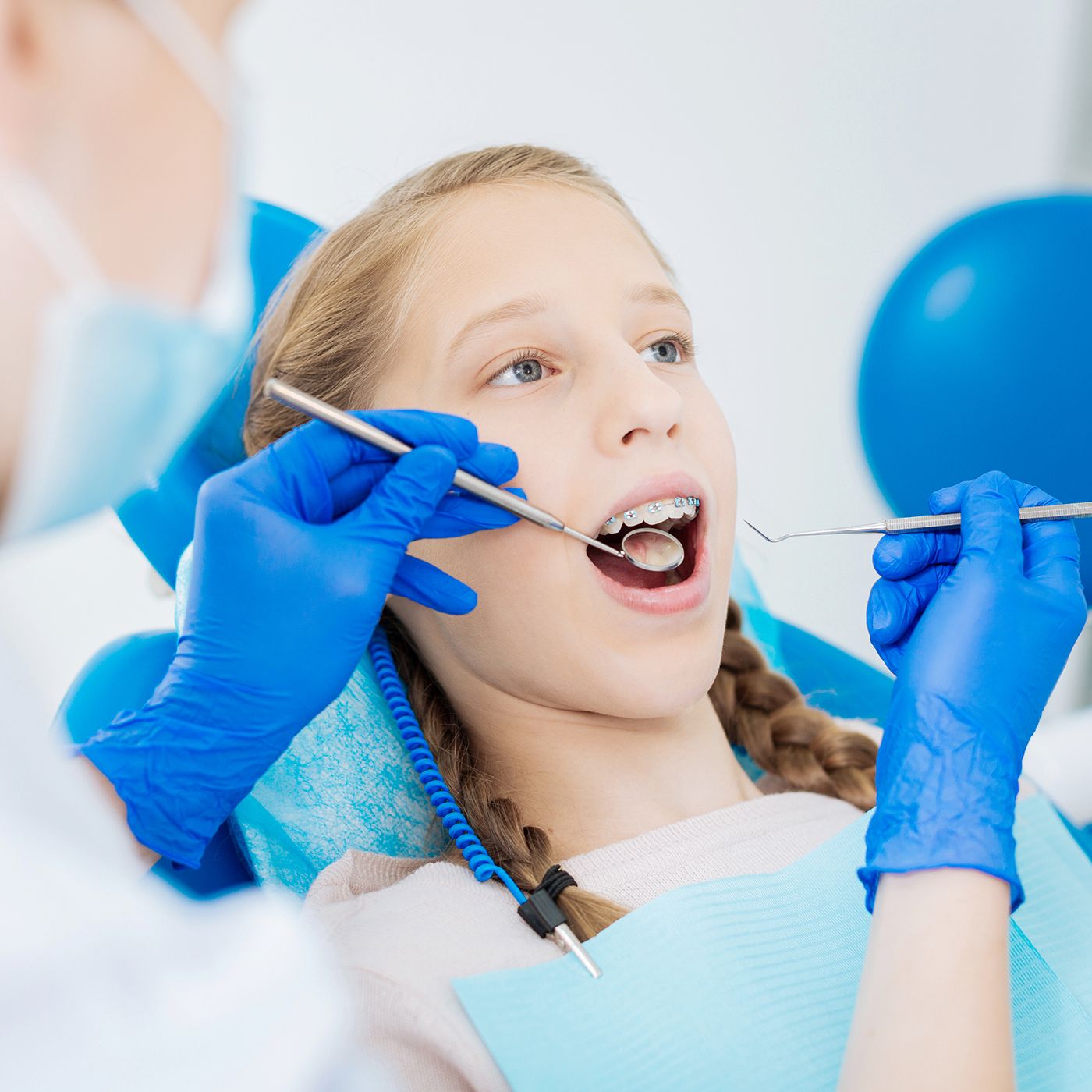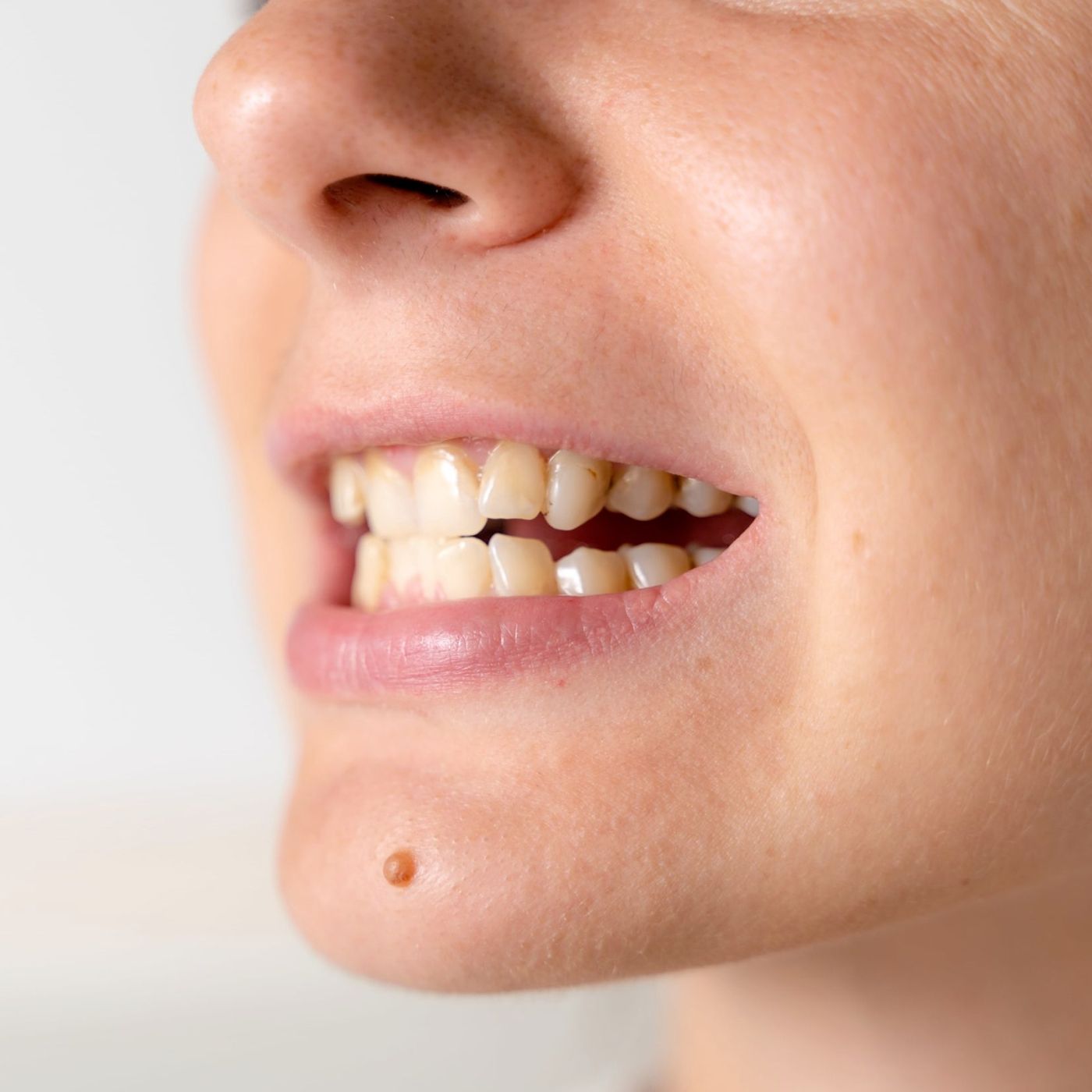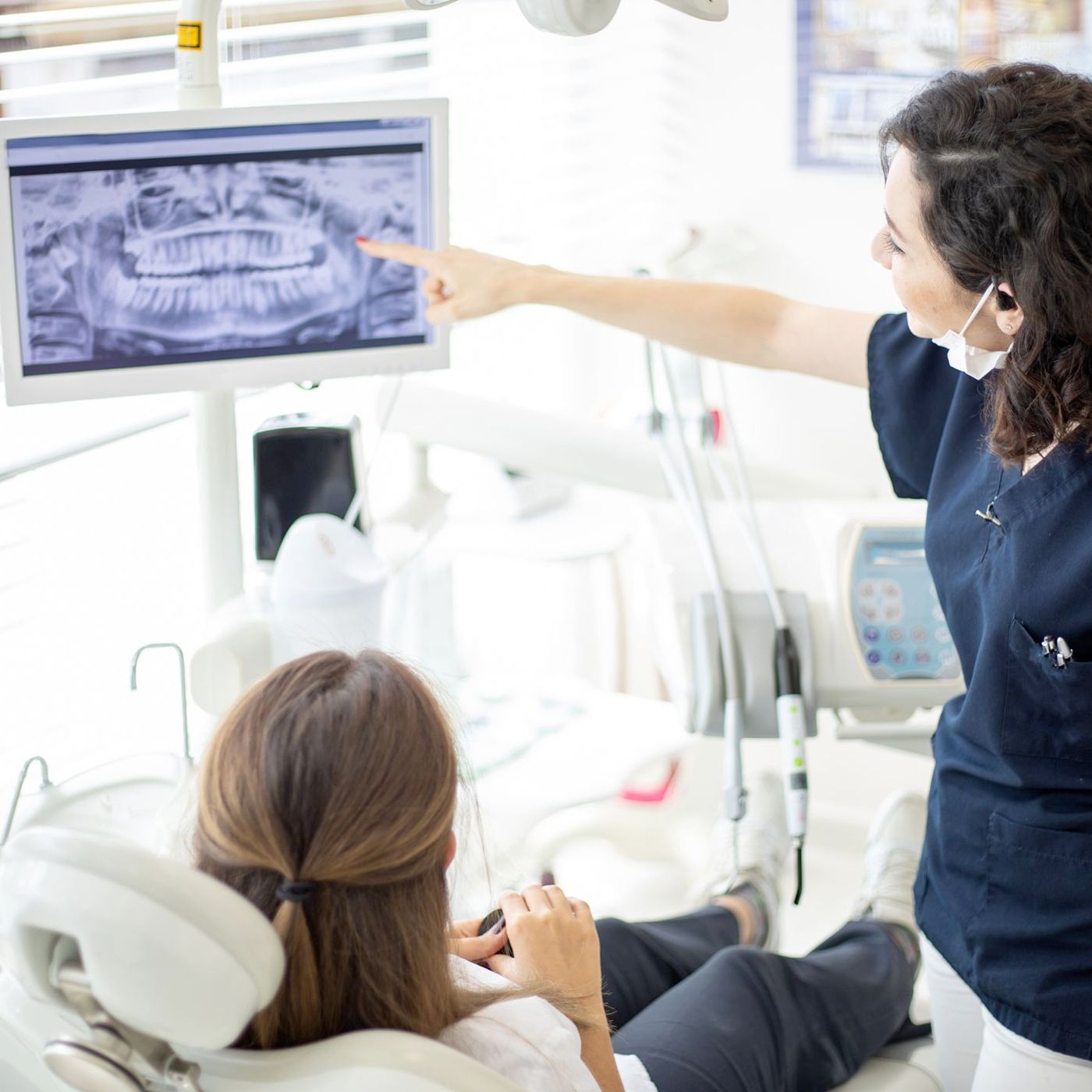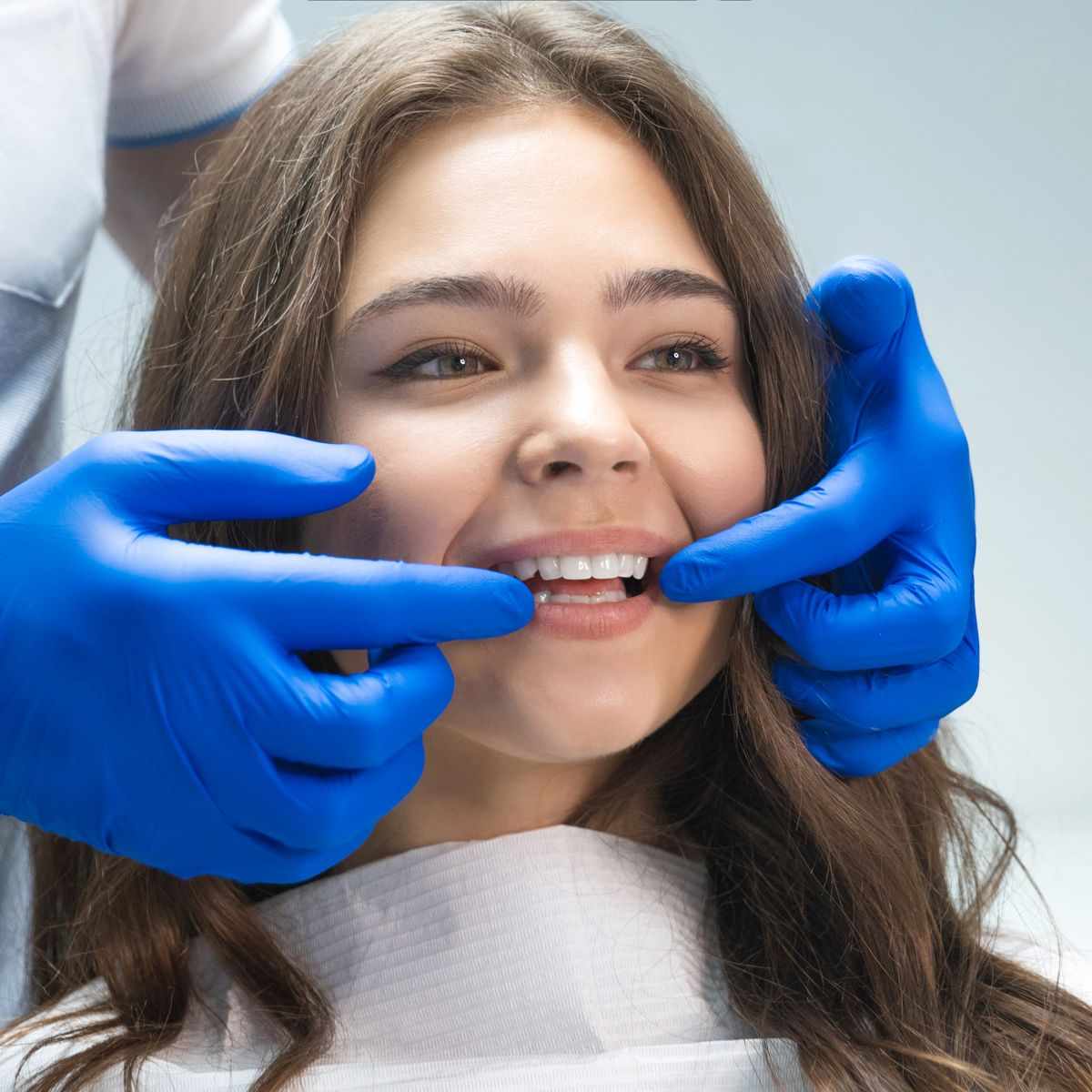Braces For Adults
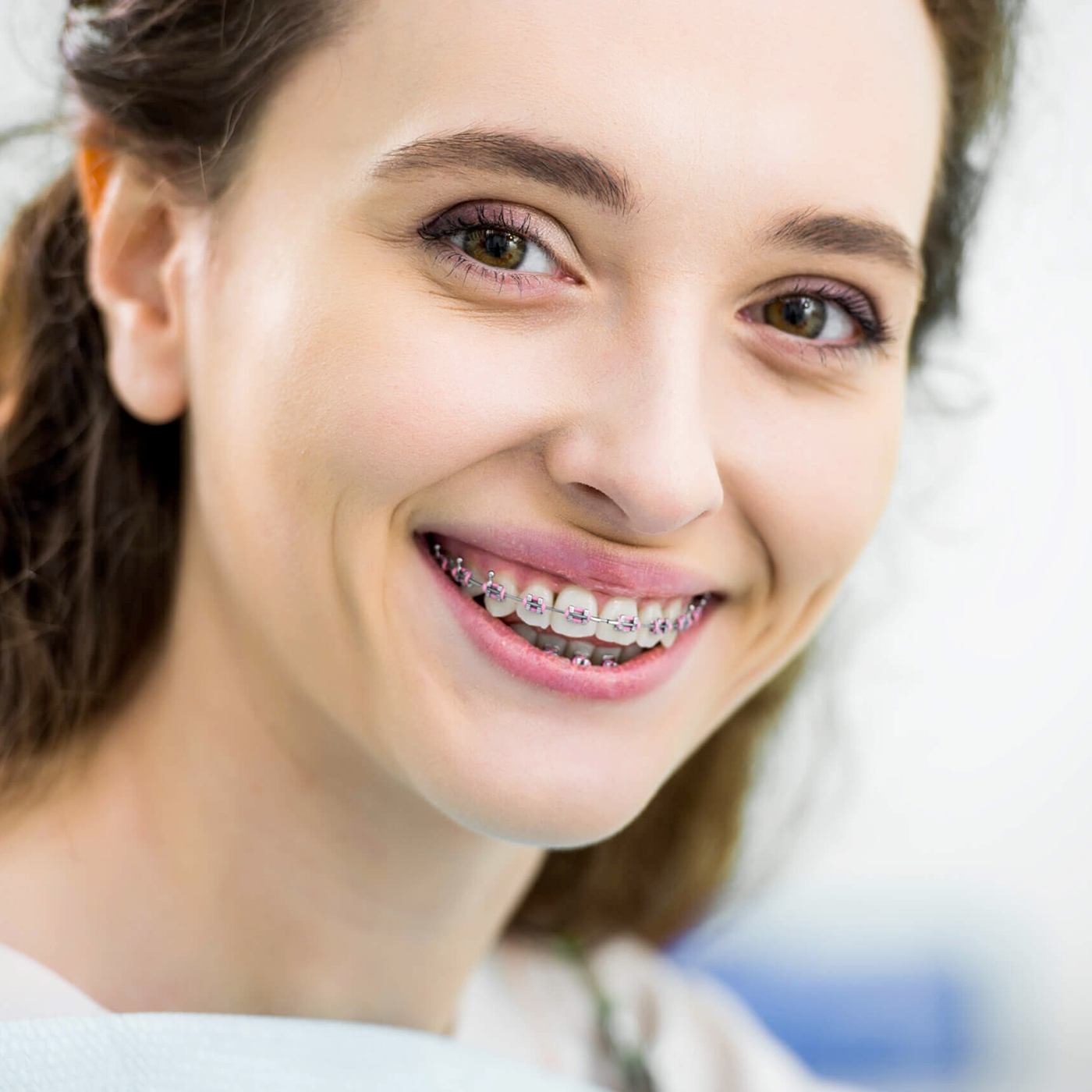
Orthodontic braces were historically associated with teenagers. Today, an increasing number of adults are choosing to wear braces to straighten their teeth and correct malocclusions (bad bites). In fact, it is now estimated that almost one third of all current orthodontic patients are adults.
Orthodontic braces are predictable, versatile, and incredibly successful at realigning the teeth. Braces work in the same way regardless of the age of the patient, but the treatment time is greatly reduced in patients who are still experiencing jaw growth and have not been affected by gum disease. In short, an adult can experience the same beautiful end results as a teenager, but treatment often takes longer.
Can adults benefit from orthodontic braces?
Absolutely! Crooked or misaligned teeth look unsightly, which can cause a low self-esteem and a lack of self confidence. Aside from poor aesthetics, improperly aligned teeth can also cause difficulties biting, chewing, and articulating clearly. Generally speaking, orthodontists agree that straight teeth tend to be healthier teeth.
Straight teeth offer a multitude of health and dental benefits including:
- Reduction in general tooth decay
- Decreased likelihood of developing periodontal disease
- Decreased likelihood of tooth injury
- Reduction in digestive disorders
Fortunately, orthodontic braces have been adapted and modified to make them more convenient for adults. There are now a wide range of fixed and removable orthodontic devices available, depending on the precise classification of the malocclusion.
The most common types of malocclusion are underbite (lower teeth protrude further than upper teeth), overbite (upper teeth protrude further than lower teeth), and overcrowding where there is insufficient space on the arches to accommodate the full complement of adult teeth.
Prior to recommending specific orthodontic treatment, the orthodontist will recommend treatment of any pre-existing dental conditions such as gum disease, excess plaque, and tooth decay. Orthodontic braces can greatly exacerbate any or all of these conditions.
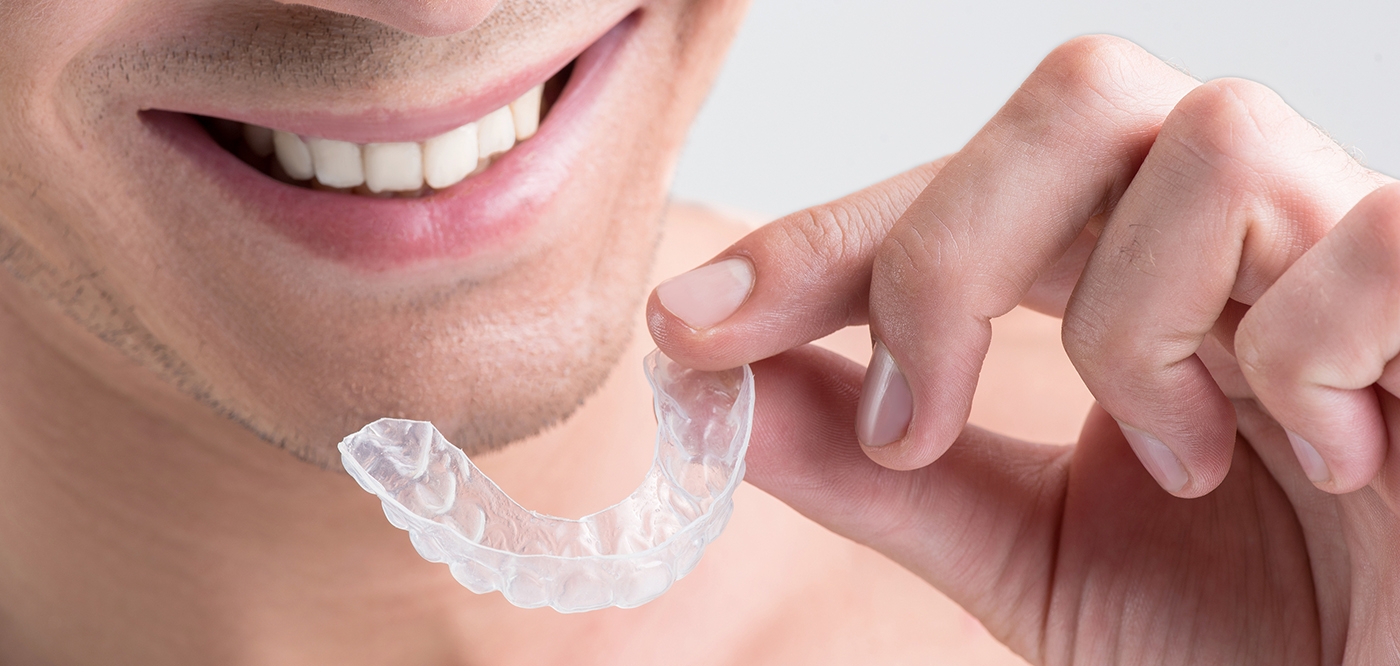
What are the main types of orthodontic braces?
The following are some of the most popular orthodontic braces:
Traditional braces – These braces are strong and tend not to stain the teeth. They are comprised of individual brackets which are cemented to each tooth and accompanied by an archwire which constantly asserts gentle pressure on the teeth. Traditional braces are generally metal but are also available in a clear synthetic material and “tooth colored” ceramic. The ceramic brackets are usually more comfortable than the metal alternative, but can become discolored by coffee, wine, smoking, and certain foods.
Invisalign® – Invisalign® aligners are clear trays and should be worn for the recommended amount of time each day for the quickest results. Invisalign® aligners are clear trays, and should be worn for the recommended amount of time each day for the quickest results. Invisalign® aligners are more comfortable and less obtrusive than traditional braces but also tend to be more costly. Not all patients are candidates for Invisalign®.
Lingual braces – These appliances are usually metal and fixed on the tongue side of the teeth, therefore cannot be seen when a patient smiles. Lingual braces tend to be moderately expensive and can interfere with normal speech.
If you have any questions about orthodontic braces, please contact our office.
orthodontics
![6-month-smiles-1]()
6 Month Smiles®
Explore more![an-introduction-to-braces-1]()
An Introduction To Braces
Explore more![at-home-care-for-orthodontic-soreness-1]()
At-Home Care for Orthodontic Soreness
Explore more![braces-for-children-1]()
Braces For Children
Explore more![brushing-and-flossing-with-braces-1]()
Brushing and Flossing with Braces
Explore more![care-during-orthodontic-treatment-1]()
Care During Orthodontic Treatment
Explore more![care-following-orthodontics-retainers-1]()
Care Following Orthodontic - Retainers
Explore more![damon-braces-1]()
Damon® Braces
Explore more![do-braces-hurt-1]()
Do Braces Hurt ?
Explore more![does-my-child-need-early-orthodontics-1]()
Does My Child Need Early Orthodontics?
Explore more![eating-while-wearing-braces-1]()
Eating While Wearing Braces
Explore more![in-ovation-l-mtm-1]()
In-Ovation® L MTM
Explore more![invisalign-1]()
Invisalign®
Explore more![is-it-ever-too-late-to-get-braces-1]()
Is It Ever Too Late To Get Braces?
Explore more![lingual-braces-1]()
Lingual Braces
Explore more![orthodontic-appliances-1]()
Orthodontic Appliances
Explore more![orthodontic-conditions-1]()
Orthodontic Conditions
Explore more![orthodontic-dictionary-1]()
Orthodontic Dictionary
Explore more![orthodontic-emergencies-1]()
Orthodontic Emergencies
Explore more![orthodontic-exams-1]()
Orthodontic Exams
Explore more![orthodontic-treatment-braces-1]()
Orthodontic Treatment (Braces)
Explore more![orthodontic-treatment-phases-1]()
Orthodontic Treatment Phases
Explore more![repositioning-teeth-with-orthodontic-appliances-1]()
Repositioning Teeth with Orthodontic Appliances
Explore more![suresmile-1]()
SureSmile®
Explore more![types-of-braces-1]()
Types of Braces
Explore more![what-does-orthodontic-treatment-involve-1]()
What Does Orthodontic Treatment Involve?
Explore more![what-is-orthodontics-1]()
What is Orthodontics?
Explore more![what-is-a-malocclusion-1]()
What is a Malocclusion?
Explore more![what-is-an-orthodontist-1]()
What is an Orthodontist?
Explore more![when-should-my-child-get-an-orthodontic-evaluation-1]()
When Should My Child Get An Orthodontic Evaluation?
Explore more![who-can-benefit-from-orthodontics-1]()
Who Can Benefit From Orthodontics?
Explore more![why-straighten-teeth-1]()
Why Straighten Teeth?
Explore more
Get In Touch
- Monday - Thursday
- Friday - Saturday - Sunday
- 9:00 am - 4:30 pm
- Closed
- Monday - Friday
- Saturday - Sunday
- 8:00 am - 5:00 pm
- Closed
- Monday - Thursday
- Friday
- Saturday - Sunday
- 9:00 am - 4:30 pm
- Appointment only
- Closed




